A
Auto Express
Guest
The all-new Renault Clio will cost from £14,295, the French car maker has revealed. The supermini’s range comprises five engines, including a new hybrid model for the first time, and four trim levels.
The range kicks off with a normally aspirated three-cylinder petrol engine, badged SCe 75, that starts from £14,295. Next up is the TCe 100, which is a new turbo petrol engine boasting 99bhp and 160Nm of torque. It gets a five-speed manual gearbox as standard, though a CVT auto is available at a £1,400 premium. Prices for that car start from £15,295.
Topping the petrol range is the TCe 130, a 124bhp 1.3-litre turbo, that costs from £20,495. The only diesel option is the dCi 85, which kicks off at £17,295.
Renault also now offers a hybrid version of the Clio, which operates in EV mode “around 80 per cent of the time” at speeds up to 38mph. Called the Clio E-Tech hybrid, it uses a 1.6-litre petrol engine mated to a pair of electric motors and a 1.2kWh lithium ion battery. Renault says it should offer a 40 per cent improvement in urban fuel consumption compared with a conventional petrol car. It is priced from £19,595.
Renault Clio: equipment and trims
The range is made up of four trims: Play, Iconic, S Edition and R.S Line. All feature full LED headlights, air-conditioning, cruise control, DAB radio and electric front windows as standard. A raft of safety kit is also included, such as lane departure warning, lane keep assist, autonomous emergency braking and traffic sign recognition.

Renault Clio - front
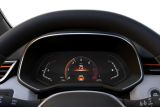
Renault Clio - dials
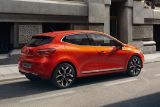
Renault Clio - rear static
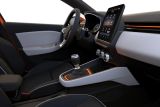
Renault Clio - interior details
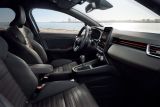
Renault Clio - front seats

Renault Clio - phone holder

Renault Clio - virtual dials
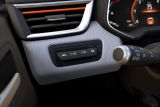
Renault Clio - controls
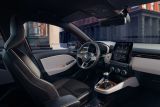
Renault Clio - driving position
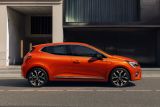
Renault Clio - side
Step up to Iconic and you’ll benefit from a seven-inch touchscreen with Apple CarPlay and Android Auto, keyless entry, rear parking sensors and 16-inch alloy wheels. S Edition brings a digital instrument cluster, climate control, auto lights and wipers and bigger 17-inch wheels.
While there is no full-fat RS-badged hot hatch for now, buyers after a racier look can opt for the Clio R.S. Line. It gets some bespoke trim, adjustable drive modes, and a rear-view camera. R.S. Line also brings buyers extra options, such as a larger digital instrument cluster, heated leather seats and a Techno Pack with wireless phone charging.
New Renault Clio: design
The new Clio is 4,050mm long - so slightly shorter than the car it replaces - and 1,798mm wide. The wheelbase is 2,583mm - again, a few millimetres shorter than the Mk4 Clio’s. The new car is significantly lighter than the outgoing version, though, with a kerbweight on the lightest variant of just 1,042kg; that’s a result of the switch to the all-new CMF-B chassis architecture, Renault claims.
The latest Renault Clio is all-new from the ground up. Every body panel is slightly different, although its exterior is clearly an evolution of the preceding model. Renault was wise to remain true to the old car's styling; the Clio is Europe's best selling supermini, shifting 450,000 units in 2018 alone, with many buyer's citing the car's design as a primary reason for purchase.

Renault Clio - front

Renault Clio - dials

Renault Clio - rear static

Renault Clio - interior details

Renault Clio - front seats

Renault Clio - phone holder

Renault Clio - virtual dials

Renault Clio - controls

Renault Clio - driving position

Renault Clio - side
“We had so much to build on with the Mk5 Clio,” Renault’s design chief Laurens Van den Acker told Auto Express. “It would have been a shame to throw it away. So we’ve focused on keeping what is good and changing what needed to be changed.
“So the exterior design is an evolution, but the interior is where we can make the most progress, so it’s a revolution. It’s the start of our interior design revolution.”
The exterior is a mature development of the Mk4. Renault’s prominent ‘face’ remains, albeit with full LED headlights that are standard across the range. The bonnet is a complex pressing, incorporating a central ‘rib’ that runs up from the badge, but the side surfacing is less fussy, with a subtle ‘gill’ that blends into a pair of creases running back from the front wheelarch.
The rear door handles continue to be integrated into the C-pillars, in an attempt to give the five-door-only Clio the look of a three-door. At the rear, meanwhile, the Mk4’s prominent shoulders are more neatly integrated, and there’s a sharper crease on the hatchback panel.
The Clio has what Van den Acker calls a “more athletic, sporty interior” which should feel more spacious and airy, despite the fact that the Mk5 Clio is around a centimetre shorter than the vehicle it replaces. This has been achieved by trimming away millimetres from interior components. “As an example, we have a smaller steering wheel and a smaller steering wheel column,” Van den Acker explained. “This helps to free up a bit more knee room for the driver.”

Renault Clio - front

Renault Clio - dials

Renault Clio - rear static

Renault Clio - interior details

Renault Clio - front seats

Renault Clio - phone holder

Renault Clio - virtual dials

Renault Clio - controls

Renault Clio - driving position

Renault Clio - side
There’s a useful gain in boot size, too; the Clio gets a variable-height floor so you can prioritise a low load lip or capacity, but the space on offer ranges from 330 litres up to 391 litres – figures ahead of many family hatchbacks from the class above.
At the heart of the Clio’s front cabin is its new infotainment system. It’s angled towards the driver and is also slightly curved. Renault’s newcomer also switches to a digital instrument display, with either a seven-inch or 10-inch panel being offered. The larger version is capable of showing navigation information in between the virtual dials.
The Clio E-Tech hybrid features a range of EV-specific displays for Renault’s seven-inch digital instrument cluster and dash-mounted infotainment screen, which relay information about the vehicles battery charge level and electric motor status. There’s also a unique gear lever with an “E-Tech” badge and an “EV” button which puts the car directly into all-electric mode, providing there is sufficient battery charge.
Finally, the Clio’s design team has retained conventional rotary controls for the air-conditioning and heating, however. They’re fitted to the bottom of the central dashboard stack, beneath some neat ‘piano key’ buttons that operate the hazard lights and other functions.
“Some companies have made a mistake by putting the HVAC [heating and ventilation] controls in the screen,” Van den Acker told us, clearly referencing the brand’s French rival PSA Peugeot-Citroen. “There’s nothing quite so simple as a button that allows you to change the temperature even with your eyes closed.”
Renault Clio: how it’s evolved
Renault Clio I (1990-1998)
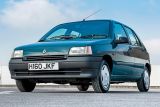
The original Clio was a watershed moment for Renault, replacing the much-loved 5 and also kick-starting the switch to names instead of numbers for the brand’s mainstream line-up. Helped by clever Nicole and Papa marketing, the car was a regular feature in the UK best-sellers list.
Renault Clio II (1998-2005)

Codenamed X65, the second-generation Clio majored on comfort and space – but did little to really improve the interior quality. Bulbous design incorporated plastic panels in a few key areas. The wildest roadgoing Clio ever, the bonkers rear-drive, mid-engined V6, was based on this generation.
Renault Clio III (2005-2012)

The Clio grew up for its third iteration – in both size and weight, because it tipped the scales around 130kg heavier than the car it replaced. It shared parts with the Nissan Note and Micra, and also introduced the estate body style to the Clio name. It was the last of the breed to be offered as a three-door, too.
Renault Clio IV (2012-2019)

The biggest Clio ever – and it’ll remain so for at least the next seven years – the Mk4 has scored on its emotional exterior design, but fallen down against rivals on cabin quality. Despite this, its sales have grown every year since launch, and it was the second best-selling car in Europe in 2018.
Do you think the new Mk5 Renault Clio is the best looking Clio yet? Let us know your thoughts below…
Continue reading...
The range kicks off with a normally aspirated three-cylinder petrol engine, badged SCe 75, that starts from £14,295. Next up is the TCe 100, which is a new turbo petrol engine boasting 99bhp and 160Nm of torque. It gets a five-speed manual gearbox as standard, though a CVT auto is available at a £1,400 premium. Prices for that car start from £15,295.
Topping the petrol range is the TCe 130, a 124bhp 1.3-litre turbo, that costs from £20,495. The only diesel option is the dCi 85, which kicks off at £17,295.
Renault also now offers a hybrid version of the Clio, which operates in EV mode “around 80 per cent of the time” at speeds up to 38mph. Called the Clio E-Tech hybrid, it uses a 1.6-litre petrol engine mated to a pair of electric motors and a 1.2kWh lithium ion battery. Renault says it should offer a 40 per cent improvement in urban fuel consumption compared with a conventional petrol car. It is priced from £19,595.
Renault Clio: equipment and trims
The range is made up of four trims: Play, Iconic, S Edition and R.S Line. All feature full LED headlights, air-conditioning, cruise control, DAB radio and electric front windows as standard. A raft of safety kit is also included, such as lane departure warning, lane keep assist, autonomous emergency braking and traffic sign recognition.

Renault Clio - front

Renault Clio - dials

Renault Clio - rear static

Renault Clio - interior details

Renault Clio - front seats

Renault Clio - phone holder

Renault Clio - virtual dials

Renault Clio - controls

Renault Clio - driving position

Renault Clio - side
Step up to Iconic and you’ll benefit from a seven-inch touchscreen with Apple CarPlay and Android Auto, keyless entry, rear parking sensors and 16-inch alloy wheels. S Edition brings a digital instrument cluster, climate control, auto lights and wipers and bigger 17-inch wheels.
While there is no full-fat RS-badged hot hatch for now, buyers after a racier look can opt for the Clio R.S. Line. It gets some bespoke trim, adjustable drive modes, and a rear-view camera. R.S. Line also brings buyers extra options, such as a larger digital instrument cluster, heated leather seats and a Techno Pack with wireless phone charging.
New Renault Clio: design
The new Clio is 4,050mm long - so slightly shorter than the car it replaces - and 1,798mm wide. The wheelbase is 2,583mm - again, a few millimetres shorter than the Mk4 Clio’s. The new car is significantly lighter than the outgoing version, though, with a kerbweight on the lightest variant of just 1,042kg; that’s a result of the switch to the all-new CMF-B chassis architecture, Renault claims.
The latest Renault Clio is all-new from the ground up. Every body panel is slightly different, although its exterior is clearly an evolution of the preceding model. Renault was wise to remain true to the old car's styling; the Clio is Europe's best selling supermini, shifting 450,000 units in 2018 alone, with many buyer's citing the car's design as a primary reason for purchase.

Renault Clio - front

Renault Clio - dials

Renault Clio - rear static

Renault Clio - interior details

Renault Clio - front seats

Renault Clio - phone holder

Renault Clio - virtual dials

Renault Clio - controls

Renault Clio - driving position

Renault Clio - side
“We had so much to build on with the Mk5 Clio,” Renault’s design chief Laurens Van den Acker told Auto Express. “It would have been a shame to throw it away. So we’ve focused on keeping what is good and changing what needed to be changed.
“So the exterior design is an evolution, but the interior is where we can make the most progress, so it’s a revolution. It’s the start of our interior design revolution.”
The exterior is a mature development of the Mk4. Renault’s prominent ‘face’ remains, albeit with full LED headlights that are standard across the range. The bonnet is a complex pressing, incorporating a central ‘rib’ that runs up from the badge, but the side surfacing is less fussy, with a subtle ‘gill’ that blends into a pair of creases running back from the front wheelarch.
The rear door handles continue to be integrated into the C-pillars, in an attempt to give the five-door-only Clio the look of a three-door. At the rear, meanwhile, the Mk4’s prominent shoulders are more neatly integrated, and there’s a sharper crease on the hatchback panel.
The Clio has what Van den Acker calls a “more athletic, sporty interior” which should feel more spacious and airy, despite the fact that the Mk5 Clio is around a centimetre shorter than the vehicle it replaces. This has been achieved by trimming away millimetres from interior components. “As an example, we have a smaller steering wheel and a smaller steering wheel column,” Van den Acker explained. “This helps to free up a bit more knee room for the driver.”

Renault Clio - front

Renault Clio - dials

Renault Clio - rear static

Renault Clio - interior details

Renault Clio - front seats

Renault Clio - phone holder

Renault Clio - virtual dials

Renault Clio - controls

Renault Clio - driving position

Renault Clio - side
There’s a useful gain in boot size, too; the Clio gets a variable-height floor so you can prioritise a low load lip or capacity, but the space on offer ranges from 330 litres up to 391 litres – figures ahead of many family hatchbacks from the class above.
At the heart of the Clio’s front cabin is its new infotainment system. It’s angled towards the driver and is also slightly curved. Renault’s newcomer also switches to a digital instrument display, with either a seven-inch or 10-inch panel being offered. The larger version is capable of showing navigation information in between the virtual dials.
The Clio E-Tech hybrid features a range of EV-specific displays for Renault’s seven-inch digital instrument cluster and dash-mounted infotainment screen, which relay information about the vehicles battery charge level and electric motor status. There’s also a unique gear lever with an “E-Tech” badge and an “EV” button which puts the car directly into all-electric mode, providing there is sufficient battery charge.
Finally, the Clio’s design team has retained conventional rotary controls for the air-conditioning and heating, however. They’re fitted to the bottom of the central dashboard stack, beneath some neat ‘piano key’ buttons that operate the hazard lights and other functions.
“Some companies have made a mistake by putting the HVAC [heating and ventilation] controls in the screen,” Van den Acker told us, clearly referencing the brand’s French rival PSA Peugeot-Citroen. “There’s nothing quite so simple as a button that allows you to change the temperature even with your eyes closed.”
Renault Clio: how it’s evolved
Renault Clio I (1990-1998)

The original Clio was a watershed moment for Renault, replacing the much-loved 5 and also kick-starting the switch to names instead of numbers for the brand’s mainstream line-up. Helped by clever Nicole and Papa marketing, the car was a regular feature in the UK best-sellers list.
Renault Clio II (1998-2005)

Codenamed X65, the second-generation Clio majored on comfort and space – but did little to really improve the interior quality. Bulbous design incorporated plastic panels in a few key areas. The wildest roadgoing Clio ever, the bonkers rear-drive, mid-engined V6, was based on this generation.
Renault Clio III (2005-2012)

The Clio grew up for its third iteration – in both size and weight, because it tipped the scales around 130kg heavier than the car it replaced. It shared parts with the Nissan Note and Micra, and also introduced the estate body style to the Clio name. It was the last of the breed to be offered as a three-door, too.
Renault Clio IV (2012-2019)

The biggest Clio ever – and it’ll remain so for at least the next seven years – the Mk4 has scored on its emotional exterior design, but fallen down against rivals on cabin quality. Despite this, its sales have grown every year since launch, and it was the second best-selling car in Europe in 2018.
Do you think the new Mk5 Renault Clio is the best looking Clio yet? Let us know your thoughts below…
Continue reading...
